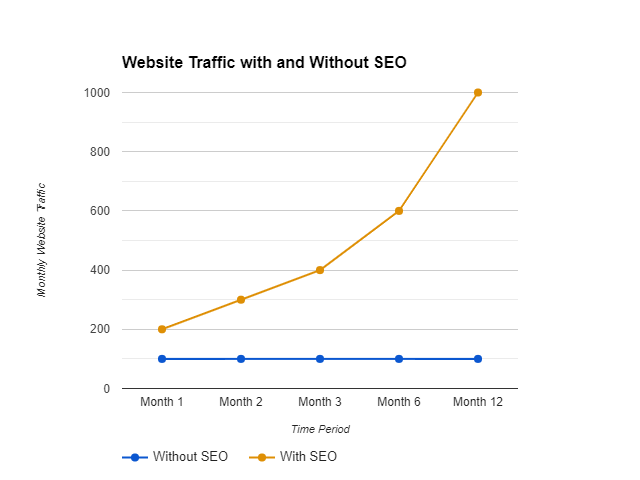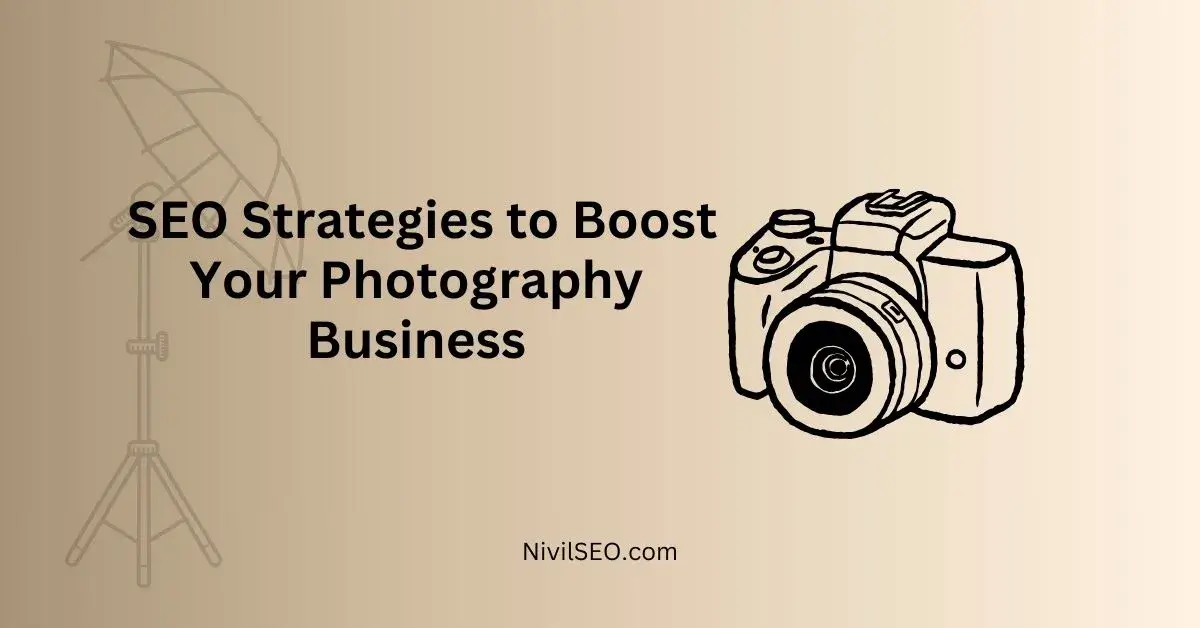In today’s digital world, having a strong online presence is essential for photographers. Whether you’re a seasoned professional or just starting out, mastering the art of Search Engine Optimization (SEO) can make a significant difference in attracting new clients and showcasing your work. This comprehensive guide, compiled by NivilSEO, SEO expert Dubai, provides photographers with a roadmap to success in the competitive world of online search.
Understanding SEO Fundamentals
SEO refers to the practice of optimizing your website and online content to rank higher in search engine results pages (SERPs) for relevant keywords. When potential clients search for photographers in your area or specializing in your genre, you want your website to be among the top results. This increases your visibility and drives organic traffic to your website, ultimately leading to more inquiries and bookings.

The key takeaway is that SEO can significantly increase website traffic for a law firm. By optimizing their website and content for search engines, law firms can attract more potential clients searching for legal services online.
Craft Compelling Content that Engages Visitors
High-quality content is king in SEO. Create informative and engaging content that showcases your photography skills and expertise. Write blog posts about photography tips, share client testimonials, and showcase your portfolio with detailed captions.
Optimizing Your Photographer Website
- Targeted Keywords: Conduct keyword research to identify terms and phrases potential clients use to find photographers. Include these keywords throughout your website content, including titles, meta descriptions, image captions, and page copy. But remember, don’t overuse them; focus on creating natural-sounding content.
- Compelling Content: Create high-quality, informative content that showcases your expertise and resonates with your target audience. This could include blog posts about photography tips, client testimonials, or behind-the-scenes glimpses into your creative process.
- Mobile-Friendly Design: Ensure your website is mobile-friendly, as many users browse the web on their smartphones and tablets. A responsive design that adapts to different screen sizes provides a seamless user experience for all visitors.
- Fast Loading Speeds: Page loading speed is a crucial SEO factor. Optimize images and videos to ensure they load quickly without compromising quality.
- Engaging Images: As a photographer, your portfolio is your strongest asset. Use high-resolution images that showcase your best work and represent the kind of photography you offer.
Building Your Online Presence
- Local SEO: If you cater to local clients, optimize your website for local SEO by claiming your Google My Business listing and ensuring your business information is accurate and consistent across all online directories.
- Social Media Marketing: Promote your work on social media platforms like Instagram, Facebook, and Pinterest. Share captivating photos, engage with potential clients, and run targeted ads to reach a wider audience.
- Industry Networking: Connect with other photographers, wedding planners, and event organizers to build relationships and explore collaboration opportunities.
Creating Shareable Content
- Blog Posts: Regularly publish informative blog posts related to photography. Share tips, tricks, and insights that valuable to your target audience.
- Client Testimonials: Encourage satisfied clients to leave positive reviews and testimonials on your website and social media pages. Social proof builds trust and credibility with potential clients.
- Case Studies: Showcase your work through compelling case studies. Highlight successful projects and the positive impact you’ve had on clients.
Technical SEO Considerations
- Website Structure: Maintain a clear and organized website structure with a user-friendly navigation system. This allows search engines to crawl and index your website efficiently.
- Image Optimization: Optimize image file names, alt tags, and captions with relevant keywords. This helps search engines understand the content of your images and improves image search ranking.
- Internal Linking: Create a strong internal linking structure by linking relevant pages on your website. This helps search engines understand the relationships between different pages and distribute link value throughout your site.
Building Backlinks: The Currency of SEO
Backlinks are essentially links from other websites to your website. Search engines consider websites with high-quality backlinks to be more authoritative and trustworthy. Encourage other photography blogs, local businesses, or relevant publications to feature your work and link back to your website.
Conclusion
By implementing these SEO strategies, photographers can significantly improve their online visibility and attract more clients. Remember, SEO is an ongoing process, so stay updated on the latest trends and best practices. NivilSEO, the Dubai-based SEO expert, can provide valuable guidance and support to help you achieve your online marketing goals.








